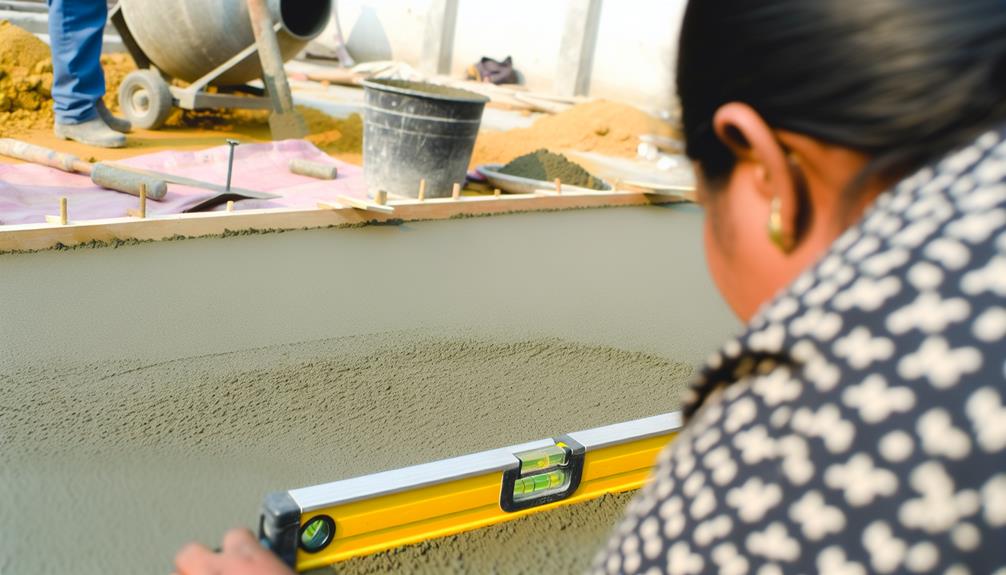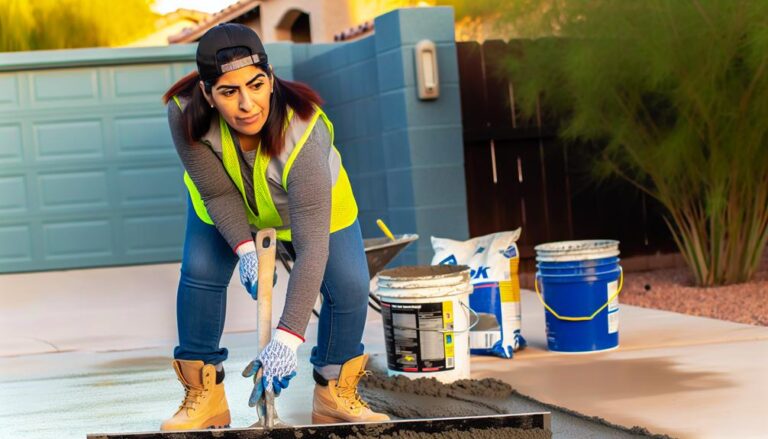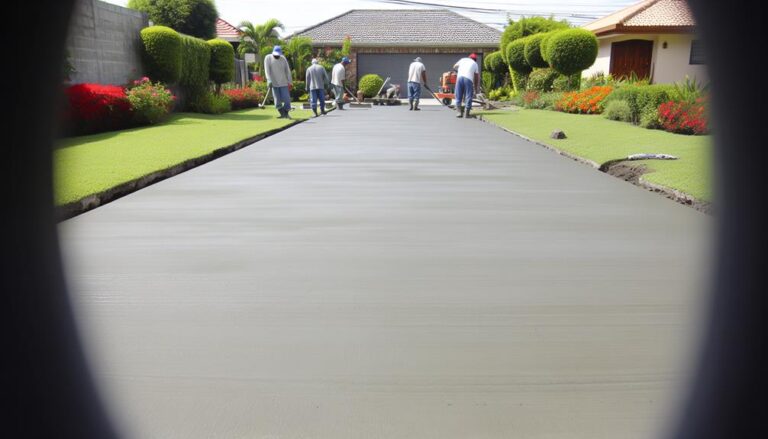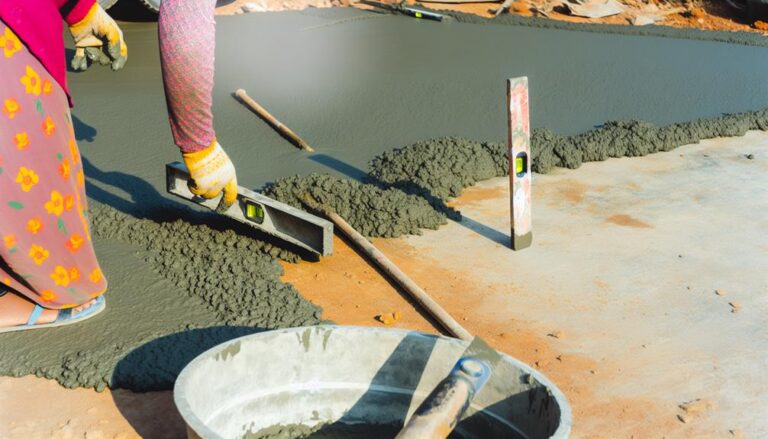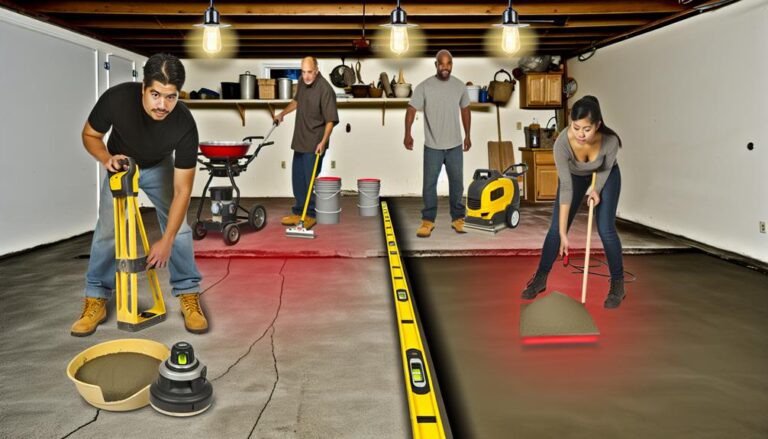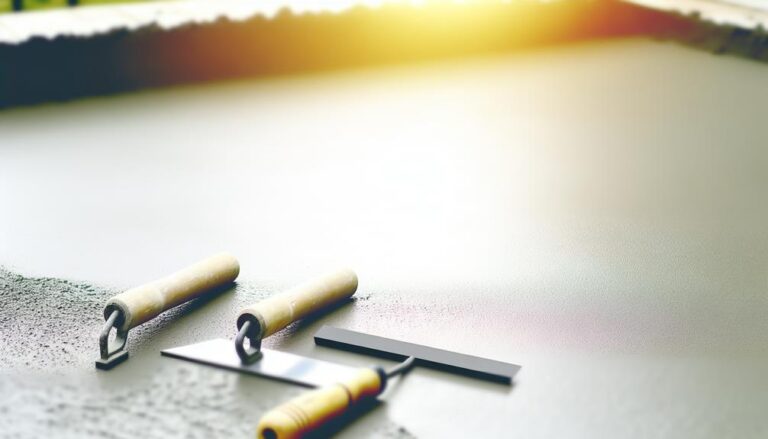Top Techniques for Effective Concrete Leveling
Concrete leveling offers various techniques to address uneven surfaces effectively. You can utilize self-leveling concrete for a seamless finish without manual troweling. Mudjacking provides a cost-efficient way to raise sunken slabs swiftly. For a contemporary look, polyurethane foam injection offers a sturdy, fast-curing solution. Concrete grinding smoothens out imperfections and is economical. Slab jacking stabilizes slabs proficiently. Applying a bonding agent guarantees new layers adhere correctly, while resurfacing compounds create even surfaces. Floor leveling compounds are ideal for preparing floors for new finishes. Delve deeper to uncover which method suits your needs best.
Self-Leveling Concrete
Self-leveling concrete is a quick and efficient way to create a smooth, even surface on your floors. If you're dealing with uneven or rough concrete, this method can save you time and effort. You don't need to spend hours troweling and leveling by hand. Instead, you mix the self-leveling compound with water and pour it onto the floor. The mixture spreads out and levels itself, creating a perfectly flat surface.
Before you start, make sure the existing floor is clean and free of any debris or loose particles. Any contaminants can affect the adhesion of the self-leveling compound. Next, you'll need to prime the surface to enhance bonding. Once that's done, mix the compound according to the manufacturer's instructions.
Pour the mixture onto the floor, starting from one corner and working your way across the room. Use a gauge rake to help spread it evenly. The compound will settle into low spots and create a level surface. Allow it to cure as recommended before walking on it or installing any floor coverings.
Self-leveling concrete is ideal for preparing floors for tile, carpet, or hardwood, guaranteeing a professional finish every time.
Mudjacking Method
Mudjacking offers an effective solution for lifting and leveling sunken concrete slabs. If you've noticed your driveway, patio, or sidewalk sinking, this method can provide a durable fix. By injecting a slurry mixture beneath the sunken slab, mudjacking raises it back to its original position.
Here's why you might consider mudjacking:
- Cost-Effective: Mudjacking is generally less expensive than replacing concrete slabs entirely. You get a leveled surface without breaking the bank.
- Quick Results: The process is relatively fast. Once the mixture is injected, the slab can often be used within a few hours.
- Minimal Disruption: Unlike full slab replacement, mudjacking causes little to no disruption to your landscaping or daily routine.
- Long-Lasting: When done properly, mudjacking can extend the life of your concrete surfaces by many years.
To start, small holes are drilled into the sunken concrete. Then, a slurry mix of water, soil, and cement is pumped into these holes, filling voids and lifting the slab. It's a straightforward, efficient solution for uneven concrete.
Polyurethane Foam Injection
Polyurethane foam injection offers a modern and efficient method for lifting and leveling sunken concrete slabs. You'll appreciate how quick and minimally invasive this technique is.
First, small holes about the size of a penny are drilled into the affected concrete. Then, a two-part polyurethane mixture is injected through these holes. The foam expands, filling voids and lifting the concrete back to its original level.
You won't have to wait long to use the leveled surface; the foam typically cures in just 15 minutes. This means you can walk or drive on it almost immediately. Plus, polyurethane foam is lightweight yet strong, so it won't add significant weight to the underlying soil, reducing the risk of further sinking.
One of the best parts? Polyurethane foam is water-resistant and won't erode over time, making it a long-lasting solution. It's also environmentally friendly, as it contains recycled materials. You'll find it works well for various applications, including driveways, sidewalks, and even interior floors.
If you're looking for a fast, durable, and eco-friendly way to level your concrete, polyurethane foam injection is definitely worth considering.
Concrete Grinding
Concrete grinding is a versatile technique used to smooth out uneven surfaces and remove imperfections. It's a great option when you need to level slightly misaligned slabs or eliminate small-scale damage. By using specialized grinding equipment, you can achieve a smooth, even surface without needing to replace the entire slab, saving both time and money.
Here are some key benefits of concrete grinding:
- Cost-Effective: Grinding is usually less expensive than other leveling methods, making it a budget-friendly choice.
- Quick Results: This technique is relatively fast, allowing you to complete your project with minimal downtime.
- Improved Safety: By eliminating trip hazards and uneven surfaces, grinding can greatly enhance the safety of your floors.
- Aesthetic Appeal: A well-ground concrete floor looks polished and professional, adding to the overall aesthetic of your space.
When you're dealing with minor irregularities, concrete grinding can be an efficient and practical solution. You'll need the right tools, such as a concrete grinder and appropriate diamond grinding wheels, to ensure a smooth finish.
Whether you're tackling a commercial project or a DIY home improvement task, concrete grinding provides a reliable method for achieving flawless, level surfaces.
Slab Jacking
While concrete grinding addresses minor imperfections, slab jacking offers a robust solution for lifting and stabilizing noticeably sunken or uneven concrete slabs. If you've got a driveway, patio, or sidewalk that's settled over time, slab jacking can restore it to its original position without the need for complete replacement.
Here's how it works: small holes are drilled into the sunken concrete. Then, a mixture, typically made of sand, cement, and other additives, is pumped under the slab. This mixture fills the voids and exerts pressure, gradually lifting the concrete back into place. You'll see immediate results, and the area can usually be used right away.
One of the big advantages of slab jacking is its cost-effectiveness. It's generally cheaper than replacing the entire slab and requires less time and labor. Plus, it's versatile enough to be used in various settings, from residential to commercial properties.
If you're dealing with uneven concrete, slab jacking provides a durable, long-lasting fix that can handle heavy loads and varying weather conditions. It's a straightforward process that can save you both time and money, while ensuring your surfaces are safe and level.
Pressure Grouting
Pressure grouting offers a reliable method for filling voids and strengthening weakened concrete foundations. You'll find this technique especially useful when dealing with significant gaps or unstable soils beneath your concrete structures. It involves injecting a grout mixture into the voids under high pressure, which then hardens and stabilizes the area.
To make the process straightforward, follow these steps:
- Identify the voids or weak spots: Start by locating the areas that need attention. This often requires a thorough inspection and sometimes ground-penetrating radar (GPR) to find all the problematic spots.
- Drill injection holes: Next, you'll need to strategically drill holes into the concrete surface. These holes serve as entry points for the grout mixture.
- Inject the grout: Using specialized equipment, pump the grout mixture into the holes under high pressure. Be sure to monitor the flow to avoid excessive filling and guarantee even distribution.
- Allow curing time: Finally, give the grout adequate time to cure and harden. This step is essential for achieving a stable and level foundation.
Concrete Resurfacing
Revitalizing the surface of your concrete can breathe new life into worn or damaged areas, making them look brand new. Concrete resurfacing is a straightforward and cost-effective way to restore your concrete's appearance and extend its lifespan.
You start by cleaning the existing surface thoroughly, removing dirt, oil, and any loose debris. A pressure washer works wonders for this task.
Next, you'll need to repair any cracks or holes. Use a concrete patching compound to fill these imperfections, ensuring a smooth and even base. Once repaired, apply a bonding agent to help the new layer adhere properly.
Mix your resurfacing compound according to the manufacturer's instructions, then spread it evenly over the prepared surface using a trowel or squeegee. Work quickly, as the compound can set fast. For larger areas, consider dividing the project into sections to avoid rushed, uneven application.
Floor Leveling Compounds
When you're dealing with uneven concrete floors, floor leveling compounds offer a quick and efficient solution. These compounds are easy to use and can save you a lot of time and effort. They create a smooth, level surface that's perfect for installing new flooring or simply improving the appearance of your space.
Here's a simple guide to using floor leveling compounds effectively:
- Clean the Surface:
Before applying the compound, make sure the concrete floor is clean. Remove any dust, debris, or grease to guarantee the compound adheres properly.
- Mix the Compound:
Follow the manufacturer's instructions to mix the leveling compound. Typically, you'll need to add water and stir until you achieve a smooth, lump-free consistency.
- Apply the Compound:
Pour the mixed compound onto the floor and spread it evenly using a trowel or a spreader. Work quickly, as these compounds can set fast.
- Allow to Cure:
Let the compound cure as per the manufacturer's guidelines. This usually takes a few hours, but it's essential for achieving a durable, level surface.
Frequently Asked Questions
How Do Weather Conditions Affect Concrete Leveling?
Weather conditions play a pivotal role in concrete leveling. When it's excessively hot, the concrete can dry too quickly, causing cracks.
If it's too cold, the concrete mightn't set properly. Rain can wash away the leveling compound and affect the curing process.
You should always check the weather forecast and plan your leveling project during mild, dry conditions to guarantee the best results.
What Safety Precautions Should Be Taken During Concrete Leveling?
When you're leveling concrete, always wear protective gear like gloves, safety glasses, and a dust mask.
Guarantee the area is well-ventilated if you're using chemicals.
Keep the workspace clear of tripping hazards and always follow the manufacturer's instructions for equipment.
Stay aware of your surroundings to avoid accidents, and never work alone in case an emergency arises.
Your safety should always be the top priority.
Can Concrete Leveling Be a DIY Project or Should Professionals Handle It?
Remember how the Sorcerer's Apprentice got in over his head? Concrete leveling can be like that. DIY might seem tempting, but it's tricky. You've got to be precise to avoid future issues.
If you're not experienced, you could end up causing more harm than good. Hiring professionals guarantees it's done right the first time, saving you time and potential headaches. So, consider leaving it to the experts.
How Long Does It Take for Leveled Concrete to Cure?
When you're leveling concrete, you might wonder how long it takes to cure. Typically, leveled concrete needs about 24 to 48 hours to set and be walkable.
However, for it to fully cure and reach its maximum strength, you'll need to wait around 28 days. Keep in mind, different factors like weather conditions and the type of concrete mix can affect curing times, so always check specific guidelines.
What Are the Signs That Concrete Leveling Is Needed?
You won't believe how obvious it's when concrete leveling is needed! Your walkway might look like a roller coaster, with uneven surfaces and massive cracks.
Doors won't close properly, and you'll trip over that hazardous step every time. Water will pool in all the wrong places, making your space look like a mini flood zone.
If you see these signs, it's time to level that concrete pronto!
